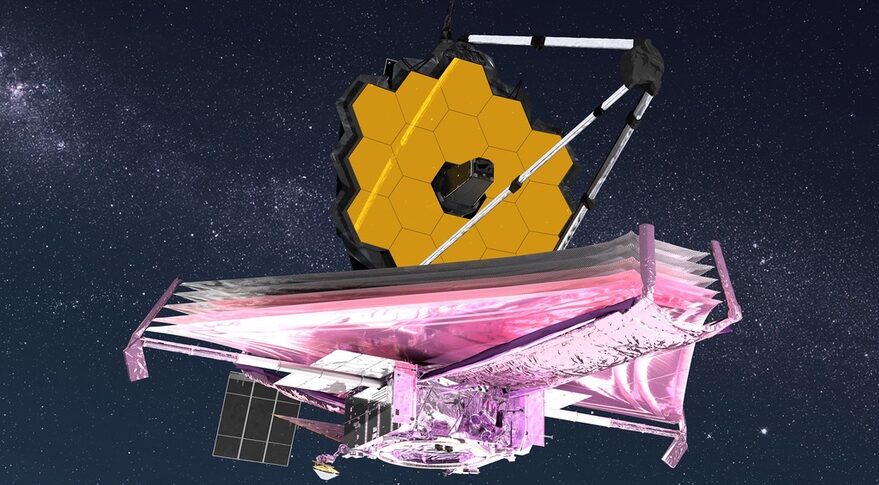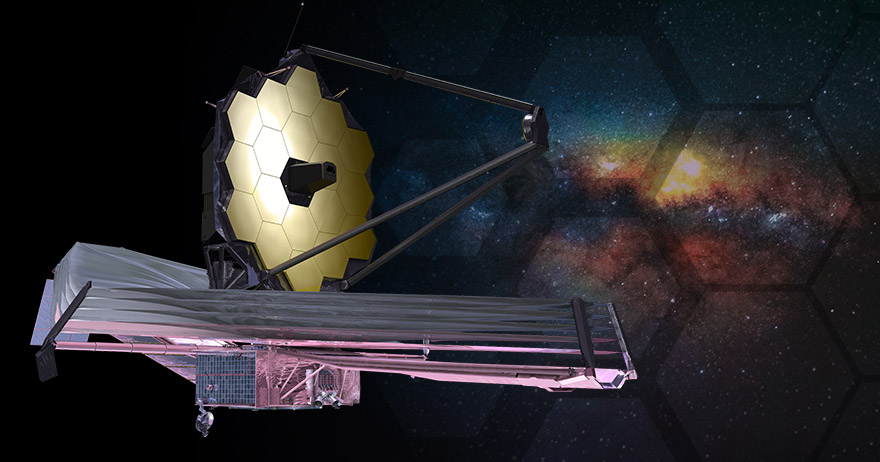
What Has The James Webb Space Telescope Been Up To?
The James Webb Space Telescope is a marvel of technology meant to discover many different things about our universe and much more. A bit over a month ago the next-generation space telescope reached its final destination at L2. By now it has had time to not only deploy, but work through different necessary phases such as alignment. This brings up the question of what exactly has Webb been up to since reaching its orbit.
The James Webb Space Telescope has been very busy since the day it launched. Throughout this process, NASA has been providing in-depth updates allowing us to keep track of Webb’s progress. This includes its alignment process, initial images, and crucial checks of different pieces of equipment, among other things. All of which gives us a good idea of where Webb is right now in terms of progress and what to expect in the coming months.
Webb is an extremely complex piece of technology and engineering. It is comprised of countless parts and software meant to take images of distant objects. This means NASA has a lot to do not only in the physical aspect of Webb but also internally. Here I will go more in-depth into what exactly Webb has been doing and its importance in the grand scheme of things.
Webb Updates

While there was a lot of focus on the initial deployments and journey to L2, there has not been quite as much attention since then. However, in the time since reaching L2 Webb has been staying busy and completing a large list of checks and steps prior to being fully operational. Thanks to NASA we have been provided updates along the way which keep us in the know of what Webb is up to. One of the first recent updates from NASA regarding Webb had to do with alignment. Specifically, on February 25th, NASA tweeted saying, “#NASAWebb has completed 2 more phases of its 3-month mirror alignment process: First, the team made adjustments to its mirror segments & updated the alignment of its secondary mirror, refining each of the 18 dots of starlight from its 18 mirror segments.” In addition, the agency provided a GIF showing all 18 segments and their corresponding image of a distant star. This tweet gave us a lot of insight into the progress of Webb’s alignment and what the process consisted of. Not long after and only a few days ago NASA provided another valuable update regarding the JWST. In this tweet, NASA mentioned, “The Webb team has successfully completed initial checks showing that the inner workings of Webb’s NIRSpec instrument are in good order! Get a technical look at how this was achieved from members of the @ESA_Webb instrument team.”
To put it in perspective, “To work properly as a spectrograph, NIRSpec has three mechanisms: a Filter Wheel Assembly (FWA), a Grating Wheel Assembly (GWA), and a Refocus Mechanism Assembly (RMA). The gratings in the GWA spread the incoming light over its colors or wavelengths to make a spectrum. The filters in the FWA block the wavelengths that are outside the range of interest to prevent contamination between different optical paths, or ‘orders.’ The RMA adjusts the instrument focus.” NASA went on to highlight that, “We operated the Filter Wheel Assembly first, cycling it through all eight of its positions in both forward and reverse directions. Those eight filter wheel positions include five long-pass order-separation filters, two finite-band target acquisition filters, and an ‘opaque’ position that serves as the instrument shutter. At each position, we recorded a set of reference data. This data showed us how well the wheel was moving and how accurately it settled into each position. Between each FWA position, we downloaded ‘high-capacity buffer’ data from the positioning sensors, and the NIRSpec team analyzed the data. The data showed that the wheel moved very well even in the first attempt.” All of these checks and various data received showed good signs for the equipment within Webb. As of right now, the James Webb Space Telescope continues to orbit L2 and finish specific tasks in alignment and general equipment checks. Most recently, less than a day ago, NASA provided a final tweet showcasing what Webb will be capable of accomplishing once ready. This highlights the question of what the Universe was like 13.5 billion years ago.
Future Objectives

Not only has NASA updated information on Webb in the form of tweets but also many different articles and more. Around the middle of February, NASA released more information on some unique celestial objects Webb will soon study and what to expect. Specifically, this has to do with studying interstellar objects passing through our solar system. Some of the most interesting findings in planetary science in recent years has to do with the discovery of interstellar objects passing through our solar system. So far, astronomers have confirmed only two of these interlopers from other star systems. While this is the case, many more are thought to exist. Scientists have had only limited ability to study these objects once discovered, but all of that is about to change with NASA’s James Webb Space Telescope. “The supreme sensitivity and power of Webb now present us with an unprecedented opportunity to investigate the chemical composition of these interstellar objects and find out so much more about their nature: where they come from, how they were made, and what they can tell us about the conditions present in their home systems,” explained Martin Cordiner, principal investigator of a Webb Target of Opportunity program to study the composition of an interstellar object.
Not only this but, “The ability to study one of these and find out its composition — to really see material from around another planetary system close up — is truly an amazing thing,” said Cordiner, an astrophysicist at NASA’s Goddard Space Flight Center in Greenbelt, Maryland, and The Catholic University of America. The first two interstellar objects detected were very different: One was very comet-like, and one was not. Cordiner and his team hope to find out how unique those objects were and whether they’re representative of the broader population of interstellar objects. The team will use Webb’s spectroscopic capabilities in both the near-infrared and mid-infrared bands to study two different aspects of the interstellar object. First, using the Near-Infrared Spectrograph (NIRSpec), they will analyze the chemical fingerprints of gases released by the object as any ices that might be present are vaporized by our Sun’s heat. Second, with the Mid-Infrared Instrument (MIRI), they will observe any dust that the object is producing — small, microscopic particles; larger grains; and even pebbles that may be lifted off the surface and surrounding the object.
Conclusion
The James Webb Space Telescope is an extremely complex piece of engineering and technology. The next-generation space telescope was first launched and then went through a long list of deployments and finally reached its final destination at L2. Since then Webb has been busy completing more tasks and checks including mirror alignment and more. Once ready the JWST will be capable of amazing things including looking for interstellar objects passing through our solar system and more. We will have to wait and see how Webb’s progress continues and the impact it has on the space industry.